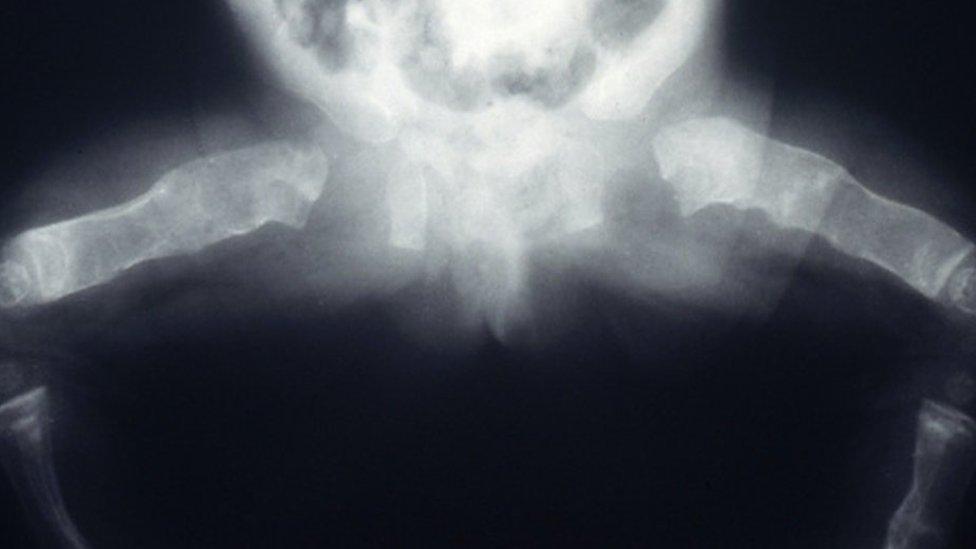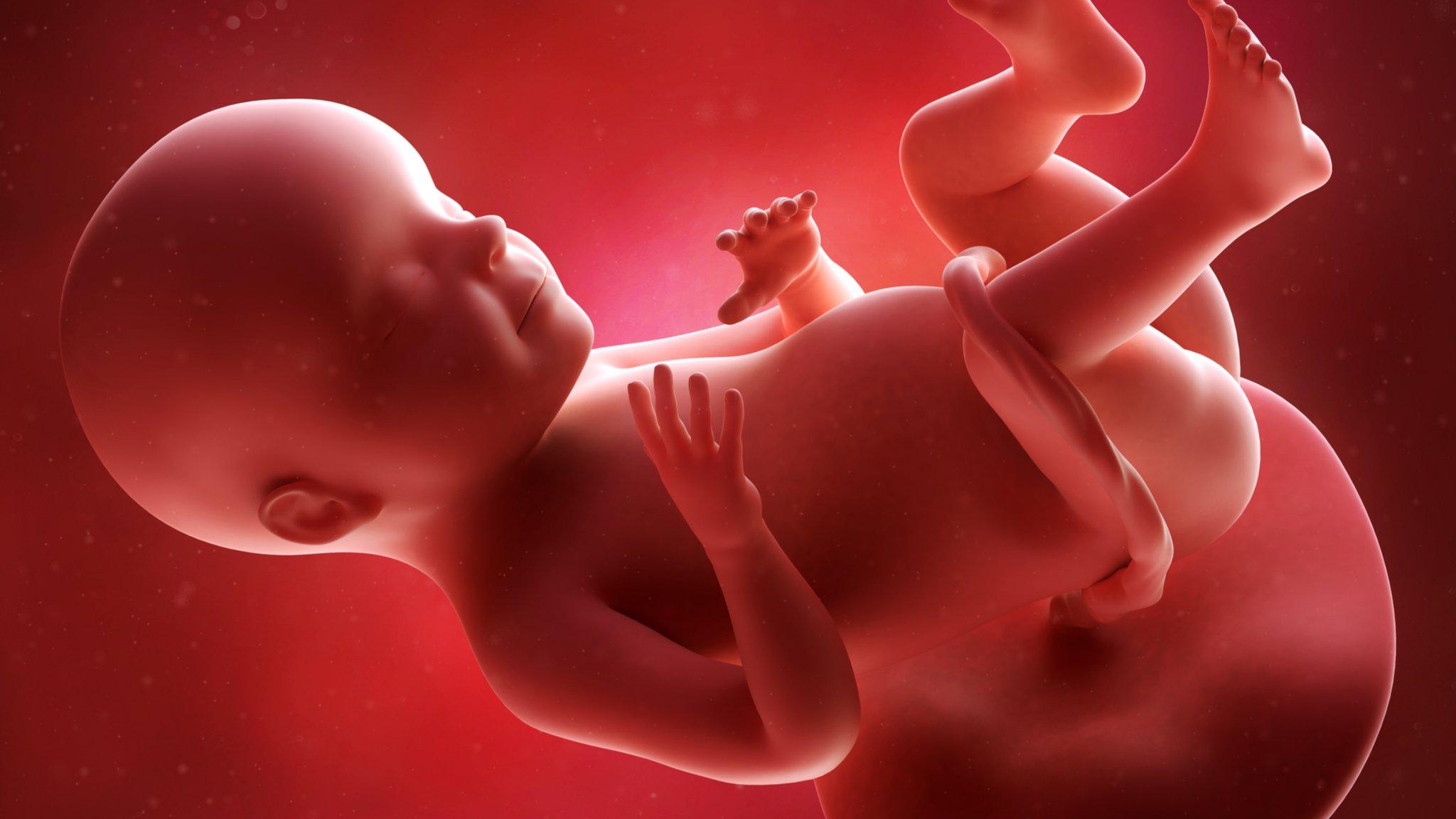'Pregnancy fluid' reverses ageing bones
- Published

X-ray of a baby with osteogenesis imperfecta
Cells in the amniotic fluid that surrounds a developing baby can revive ageing and weak bones, say UK scientists.
The discovery could help babies with genetic diseases, elderly people and even astronauts, they say.
The findings in mice, published in Scientific Reports, external, showed cells in the fluid strengthened bone and cut fractures by 80%.
Human clinical trials are planned within the next two years.
Brittle bones
The amniotic fluid protects the baby and helps it develop inside the mother's womb.
It also contains stem cells that are the building blocks of other tissues.

Artwork showing a needle entering the amniotic sac
The researchers collected the amniotic stem cells from material left over from screening tests during pregnancy or collected immediately before birth.
The team at the Institute of Child Health - a collaboration of Great Ormond Street Hospital and University College London - injected the cells into diseased mice.
The animals had brittle bone disease or osteogenesis imperfecta.
In people, the condition affects around one in every 25,000 births and can be fatal, with babies born with multiple fractures.
Even those who survive face up to 15 bone fractures a year, brittle teeth, impaired hearing and growth problems.
Tests on mice showed injecting the cells increased the strength, plasticity and structure of the animal's bones.
The number of fractures was cut to a fifth of their original level.
New bones
Dr Pascale Guillot, who conducted the research, said the findings could help people from crib to grave - from babies with brittle bone disease to pensioners with osteoporosis.
She told the BBC News website: "I am extremely excited because this is a major breakthrough that will potentially affect everyone.
"We are already used to putting cream on our face to slow down ageing of the skin, this will be the same for the skeleton.
"I think in the next few years we will have ways to slow down the ageing of our skeleton to reduce fractures and pain.
"This will also be very important for space travel as when you don't have G-force the bones become fragile."
Bone is constantly being remade with cells called osteoclasts breaking down old bone and osteoblasts making new bones.
Dr Guillot said brittle bone disease, osteoporosis and space travel were all characterised by osteoblasts "becoming lazy".
The study showed the stem cells were increasing the natural activity of the osteoblasts - rather than directly making new bone themselves.
"Stem cell transplants boost these lazy cells so they become very eager to make more bone and mature bone," added Dr Guillot.
Clinical trials are already planned, but ultimately the researchers' aim is to discover which chemicals the stem cells are releasing that kick the osteoblasts into gear.
Follow James on Twitter., external
- Published1 October 2016

- Published12 October 2015
